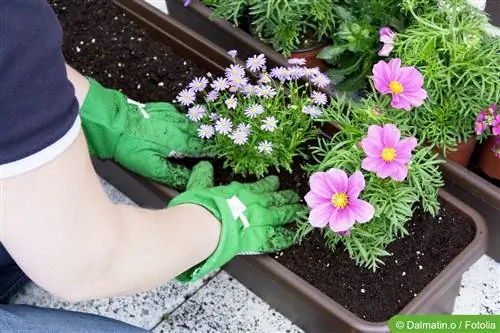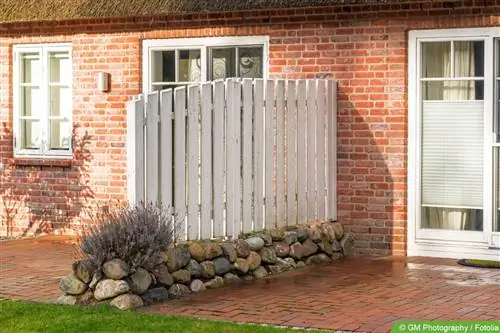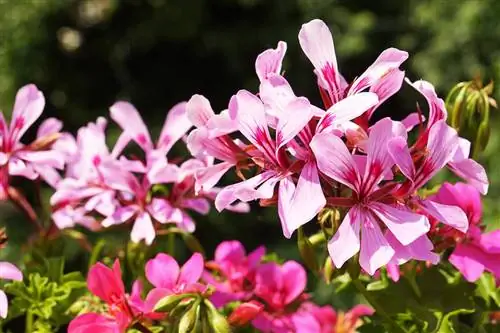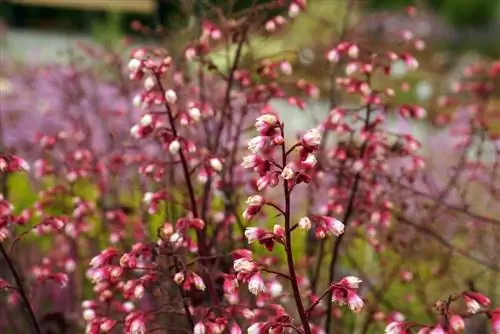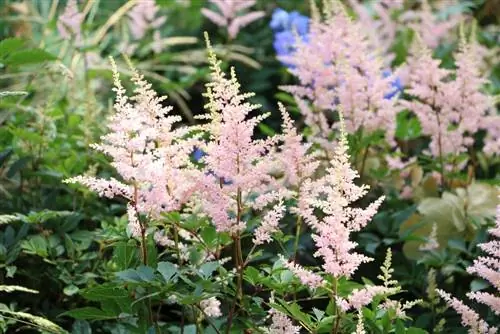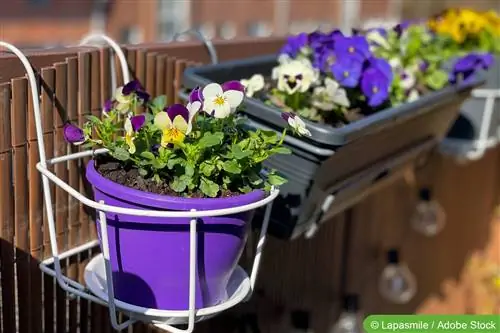- Author admin [email protected].
- Public 2023-12-17 03:39.
- Last modified 2025-06-01 06:48.
In principle, everything is possible in the balcony box. As long as the location, soil used and box size match the chosen planting, everything that grows outdoors can also grow in the balcony box. Whether that is what you want, whether the plants meet your personal requirements and fit the box stylistically, is another question.
Instructions and ideas
A balcony box can contain quite a lot - depending on the location, volume and care, a small herb garden can thrive in it just as well as salads, classic flowering plants or even exotic plants. The transition from balcony box to plant box and bucket is fluid, because thanks to special hanging devices, pretty much any container can now be attached to the inside or outside of the balcony railing. A balcony box is no longer just a classic balcony box, and what grows in it is a question of faith. Therefore, very different ideas are presented here as to what a balcony box planting can look like - with and without flowers, edible or not, classic or unusual.
Geraniums: The classic for the balcony box

Geraniums are a classic when it comes to planting balcony boxes. They are easy to care for, bloom early and for a long time, are available standing and hanging and in all colors. Geraniums overwinter indoors and should be brought indoors in the fall. In spring you wake them from hibernation by placing them in the light and letting them spend the first warm days outside. However, they should first be repotted in fresh soil. As soon as they are watered, they sprout again from the cane. However, geraniums are quite sensitive to cold: they are only allowed to spend the night outside when there is no longer any frost. Geraniums want soil or a substrate that doesn't allow too much water to accumulate on the roots, otherwise they will be damaged. And they want sun, as much of it as possible, and as often as possible. A shady balcony is not so suitable for geraniums.
Geraniums need a lot of water. Each plant consumes four to six liters per week, and depending on the size of the balcony box and the number of plants in it, that adds up to a lot. And that also applies to fertilizer - geraniums need a lot of it. Fertilize with irrigation water once a week to ensure that the plants bloom beautifully and for a long time. Three types of geraniums play a role in balcony box planting: the normal geraniums, which grow upright, the trailing geraniums, which hang down from the pot or box, and the scented geraniums, which have rather inconspicuous flowers but smell intensely. The latter are particularly interesting because they keep pests such as wasps, hornets and other insects away from the balcony. The animals do not like the intense smell of the oil-containing leaves and avoid the immediate vicinity of the plants.
Herbs in the balcony box
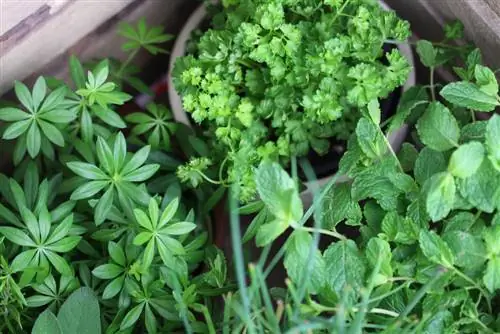
It's clear that you can no longer get by with just s alt and pepper in the kitchen. Many herbs have become an integral part of German cuisine, from parsley to chives and lemon balm to the more Mediterranean herbs such as rosemary, basil, thyme, lavender, oregano and marjoram. All of this not only grows outdoors, but also thrives in balcony boxes. Parsley doesn't like direct sun and is relatively sensitive to wet roots (as is dill), while Mediterranean herbs cope well with full sun, need a lot of water (especially lavender) and bloom beautifully in summer. The herbs are also allowed to bloom because the insects native here pollinate them, which means that the balcony box planting quickly becomes a sure-fire success. The herbs are not frost-resistant, so they should definitely be kept indoors in a cool, not too dark place. Seeds that have failed will germinate the next spring - so the soil should not simply be completely replaced in the spring, but rather carefully supplemented.
Many herbs are only annual, basil for example and dill too. Others, like rosemary, can bring joy for many years. Herbs that are consumed require a special herbal fertilizer that is non-toxic. If you value organic quality, you should have the appropriate herbal soil in your balcony box and pay attention to organic seeds and organic fertilizer. Some herbs multiply very quickly, such as chives, and need to be divided regularly so that they don't overgrow the entire box and get in their own way.
Zen garden for total relaxation
Zen gardens appear simple, simple, elegant. They radiate calm. They allow everyday life to sink in and take the viewer into a completely foreign world. Apart from that, Japan is simply trendy. You can also bring the Zen garden into your balcony box. To do this you need simple, wooden boxes that are lined with foil on the inside. They are filled with substrate or soil (depending on the planting). After planting, this base is covered with simple bas alt gravel or white marble gravel. If you choose white marble gravel, you should wash the stones well before filling the boxes, as they usually contain a lot of dust, which is not good for the plants. Depending on your mood and preference, different types of bonsai can be planted. The respective care can be requested from specialist retailers; the differences are quite large. However, more robust plants are preferable for balcony box planting.
What makes a Zen garden is the detailed design: the world is represented in miniature, so to speak, you create an artificial image of nature that should look as true to life as possible without losing its man-made, perfectionist character. A small forest works quite well, a few larger stones that represent rocks or mountains, individual low plants, a flowering accent in one of the boxes. However, the areas strewn with fine stones always dominate, which can also be shaped as desired. When filling the balcony boxes for the first time, you should make sure that there are more stones in the middle, creating a small hill, because the stones will sink quickly. A small supply for refilling is also recommended. However, the Far Eastern boxes have the perfect effect in a rather empty environment, on a balcony that appears tidy, clean and tidy, with little to no furniture.
What you should know in brief
There are beautiful balcony box plants for every season. Many types of plants thrive wonderfully in window boxes. With such beautiful, colorful plants you can bring the south into your home. The beautiful season begins in spring, when the days become brighter and the sun comes out more and more. You would like to be able to look at colorful flowers on the balcony:
- You can plant the spring light flower from February. Visually, this flower looks like a giant crocus. Since this plant can survive frosty nights, it is ideal for this time of year. This beautiful flower blooms purple pink from February to April.
- With the crocus you actually say goodbye to winter. Crocuses come in many varieties and colors. Some bloom in spring and some in autumn, the flowers are cup-shaped.
- In summer you can plant beautiful geraniums in the balcony boxes. They also come in different types and colors. So you can mix and match as you please. The flowers will cause quite a stir as they will be magnificent all summer long.
- Fuchsias are also preferred for balcony boxes. They are easy to care for and breathtakingly beautiful to look at. There are also different varieties and colors of fuchsias, so you can combine them wonderfully.
Geraniums and fuchsias bloom until autumn. If you have the opportunity, you can also let them overwinter. You cut them back and put them in a protected place, e.g. the basement. In any case, the place should be frost-free and dark. In January you can bring these plants back into the brightness and slowly nurture them again before you can plant them again in May.

